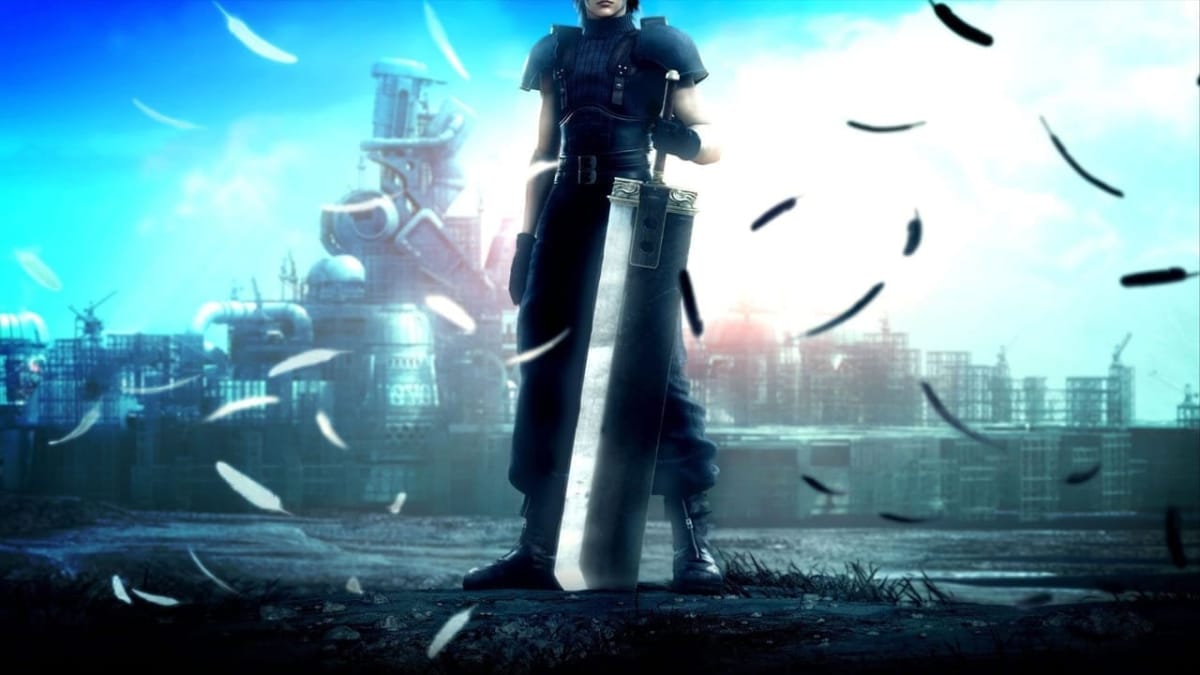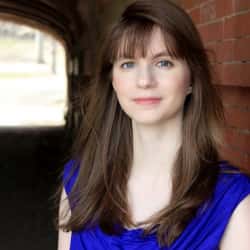Crisis Core: Final Fantasy VII had a big legacy to fill when it was released. A hotly anticipated story and a prequel to what is still arguably the most popular Final Fantasy game even 20 years after its release, Final Fantasy VII was critically and commercially acclaimed, and Crisis Core had big expectations.
Crisis Core tells the story of Zack Fair, a member of SOLDIER and a key character in Final Fantasy VII, although he is deceased by the time the story begins. Taking place seven years before the opening scenes of VII, Crisis Core follows Zack’s journey as a Shinra operative as all of the pieces fall into place to set the stage for the following game. While Crisis Core has its own story and characters, there is an undertone that everything is undeniably carefully crafted to set up VII.
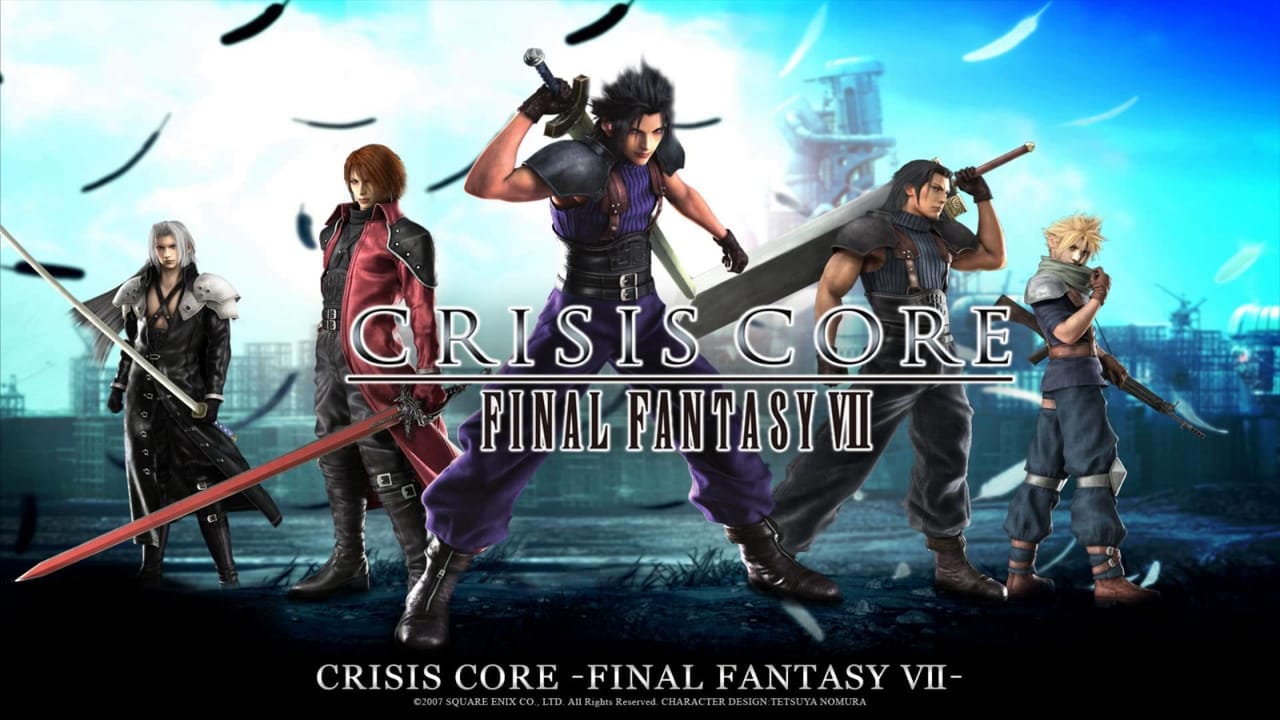
Zack, under the mentorship of Angeal Hewley, fights against the SOLDIER traitor Genesis Rhapsodos; Zack is aided by Sephiroth and other Shinra members including the Turks and Cloud Strife. It chronicles Zack’s promotion to SOLDIER First Class and from there his downfall, as his fight with Genesis and his mentor’s unraveling gradually reveal to him the true colors of Shinra. It also shows his witness to Sephiroth’s descent into madness, following the loss of his best friends and the discovery of his origin as an artificially created being using Jenova cells. The story reaches appropriate Final Fantasy levels of heartwrenching sadness and spiraling confusion when the plot gets hard to follow in a few places and at points plays out like watching a staging of Hamlet—you know everything bad is going to happen, but you still want to watch it anyway.
What saves Crisis Core from having the same morose tone as a funeral is its characters. Zack shines through the entire time, with less personal baggage and fewer angsting tendencies than Cloud had in the original game. He’s more of an upbeat protagonist who still recognizes the evil in the world and is eager to step up to the plate and fight it. While other characters have tragic stories, they aren’t dwelt upon like points in VII. Instead, it's seen through the eyes of Zack and his determination to strive forward and his willingness to deal with tragedy.
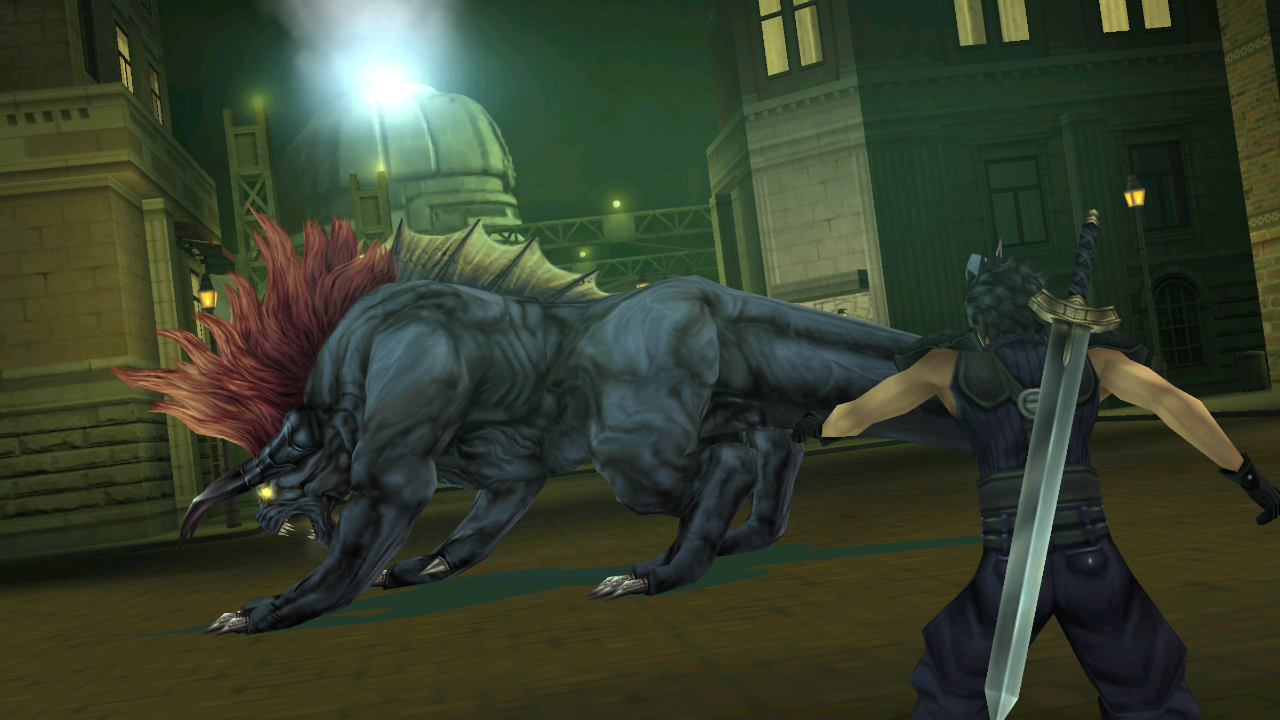
The most prominent original characters the game introduces are SOLDIER director Lazard, Angeal Hewley, Genesis Rhapsodos, and Turk Cissnei. Cissnei was my personal favorite of the characters introduced as she is a dynamic character in her own right and an excellent foil for Zack. She is in the similar position of someone loyal to Shinra who gradually starts to question their methods and motives, and this leads the pair to develop a strong bond. Unfortunately, her lack of appearance in VII leaves her ultimate fate up to the player’s imagination.
Angeal, as Zack’s closest friend and mentor as well as the original owner of the iconic Buster sword, provides a stable figure for him to look up to for the first part of the game, and their relationship gradually grows to mirror Zack and Cloud’s. Angeal embodies the game’s theme of legacy and is strongly motivated by his own honor and loyalty, both to SOLDIER and to his friends.
Genesis, the game’s big bad, is an interesting character. While he doesn’t measure up to the absurdly fan favorite villain Sephiroth, the creators set him apart by making him a very theatrical character. Many things he does are purposely over the top, and the man is a walking example of symbolism, which he himself seems to be conscious of. He also goes around constantly quoting from LOVELESS, his favorite book of poetry, which seems to be the world’s equivalent of the Illiad or the Odyssey.
Most prominent characters from Final Fantasy VII make appearances, whether as part of the story—such as Cloud, Tifa and Yuffie—or as cameos—such as Cait Sith’s appearance on the Digital Mind Wave or Cid. Tifa and Aerith both stay true to their characterization in VII; however, it is Cloud who is the most interesting one. In terms of character development, seeing a young, naive Shinra infantryman is a jarring experience, given that even in his weak moments in VII Cloud is still a force to be reckoned with. Sephiroth, on the other hand, is portrayed as rational and hypercompetent, only losing his mind in the second half of the game. Zack’s admiration of him and his reliance on him as a colleague and as a casual friend adds a humanizing aspect to him that is never seen in VII.
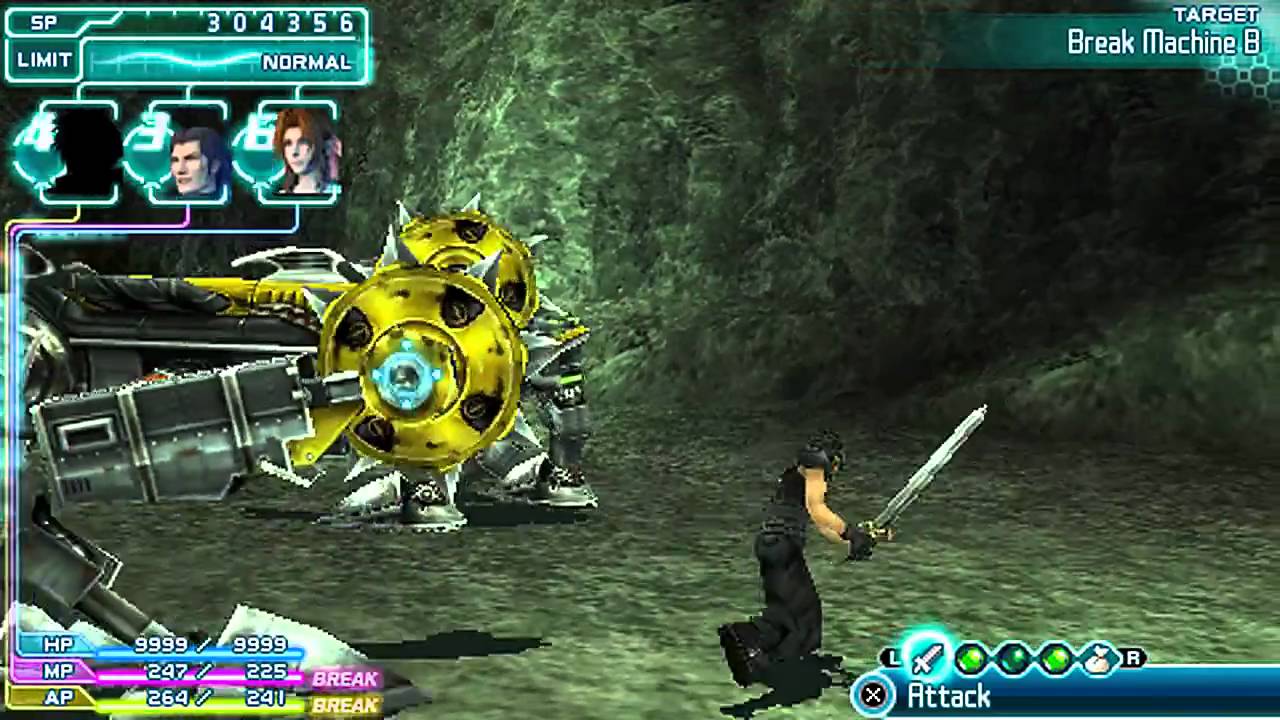
The combat system for Crisis Core is different to that of any other Final Fantasy games. As Zack is the only playable character, the turn-based battle system the series is known for was modified and integrated with real time combat to produce a fluid battle system without the limitations a turn-based system would have for a one character party. Zack has access to the attack command, magic via Materia, and items in battle, though he is not always able to use them immediately and there is usually a wait of a few seconds, hence the integration of a turn-based system. However, Zack is able to freely move about the area during combat in order to avoid attacks.
Crisis Core's combat relies heavily on the Digital Mind Wave, which is used for limit breaks, summons, and leveling up. A series of three numbers on the DMW are constantly spinning during combat on the upper left corner of the screen; the correct numbers aligning will give Zack a status boost or an immunity, which seems to be randomly generated, but I'm sure depends on a lot of complex algorithms and math. The right combination of numbers or the right combination of emotions can lead to a level up, a summon, or a limit break, each of which are associated with different friends of Zack including Tseng, Sephiroth, and Aerith. More limit breaks and summons are unlocked as the player progresses through the game or completes side quests. Unlike previous games, there is less of an emphasis on elemental magic and balancing in Crisis Core and all of the summons and limit breaks are specifically non-elemental in nature.
The biggest drawback of the DMW system is the numbers can get distracting and every time the gauge goes into a limit break or summon mode, as the battle is paused for cinematic clips or screenshots, disrupting the flow. It also takes away player control of the limit breaks and the summons as they are now generated automatically, unable to be saved for a time when they could be really useful. However, there are accessories and materia that can be equipped to alter your chances of the DMW, if you so choose.
Missions are introduced as a way for Zack to complete sidequests without having to be in any specific place, as the game is linear and backtracking is not allowed. Accessible from any save point, Missions are assigned by Shinra or randomly emailed to Zack, such as Yuffie’s Materia Hunter missions, and all are rewarded well. Some missions are unlocked as you play through the story and some are missable as you need to talk to specific characters to unlock them. In addition to being a welcome break from the main storyline and injecting the game with some much needed comic relief, the missions also take much of the tedium out of leveling up, as completing missions brings more rewards than running around an area in circles and simply level grinding. However, it is possible to miss some missions entirely, which is the game’s way of encouraging you to go through the main storyline talking to everyone and investigating everything. Missions are entirely optional, so if you would rather power through the main story, that's also an option.
The game’s graphics and music are both quite good. Considering it was released on the PSP, the cutscenes are sharp and the in-game animation is smooth, though it does show its age after ten years. The art direction uses a much brighter color palette than is used for VII or even Advent Children, though the art style is similar to that used in newer games like Final Fantasy X. The music, thematically, takes several cues from VII, but composer Takeharu Ishimoto does an excellent job of making it stand on its own, and Crisis Core’s score is beautiful. My personal favorite track is the standout Flower Blooming in the Slums, referring, of course, to Aerith.
As a successor and prequel to Final Fantasy VII’s legacy, Crisis Core can absolutely hold its own. With a cast of memorable characters and an expansive plot, it serves as an appropriate backstory to VII but becomes so much more than that. The greatest pitfall in making Crisis Core was the risk of creating a game that was merely a clone of VII, and instead, Crisis Core was able to take on a life all its own.
Crisis Core: Final Fantasy VII was reviewed on PlayStation Portable with a copy purchased by the reviewer.
Review Summary
Crisis Core has an excellent cast and an inventive yet easy to use combat system that distinguishes itself from other Final Fantasy games. However, the DMW can get tedious or distracting after a while, and the plot at times is overly confusing, following in the grand tradition of Final Fantasy games. Still, buoyed by a wonderful score and solid art direction, the game manages to step out of the shadow of its predecessor and stand on its own right.
(Review Policy)Pros
- Large cast of thought-out characters
- Well-devised battle system
- Zack Fair
- Mission system of side quests
Cons
- DMW system breaks the flow of battle
- Plot is overly confusing at points
Have a tip, or want to point out something we missed? Leave a Comment or e-mail us at tips@techraptor.net
